A Student Experiment to Measure 21-cm Radiation
As a teaching fellow for Astronomy 191, I designed and built an inexpensive horn antenna to detect 21cm radiation from the galaxy. The students in the course used this antenna to measure the circular velocities of Hydrogen clouds in the Milky Way at various galactic radii, and then constructed a galactic rotation curve. I have also presented the horn at public outreach event such as the Cambridge Science Festival. Photos of the horn antenna and sample measurements are shown below.
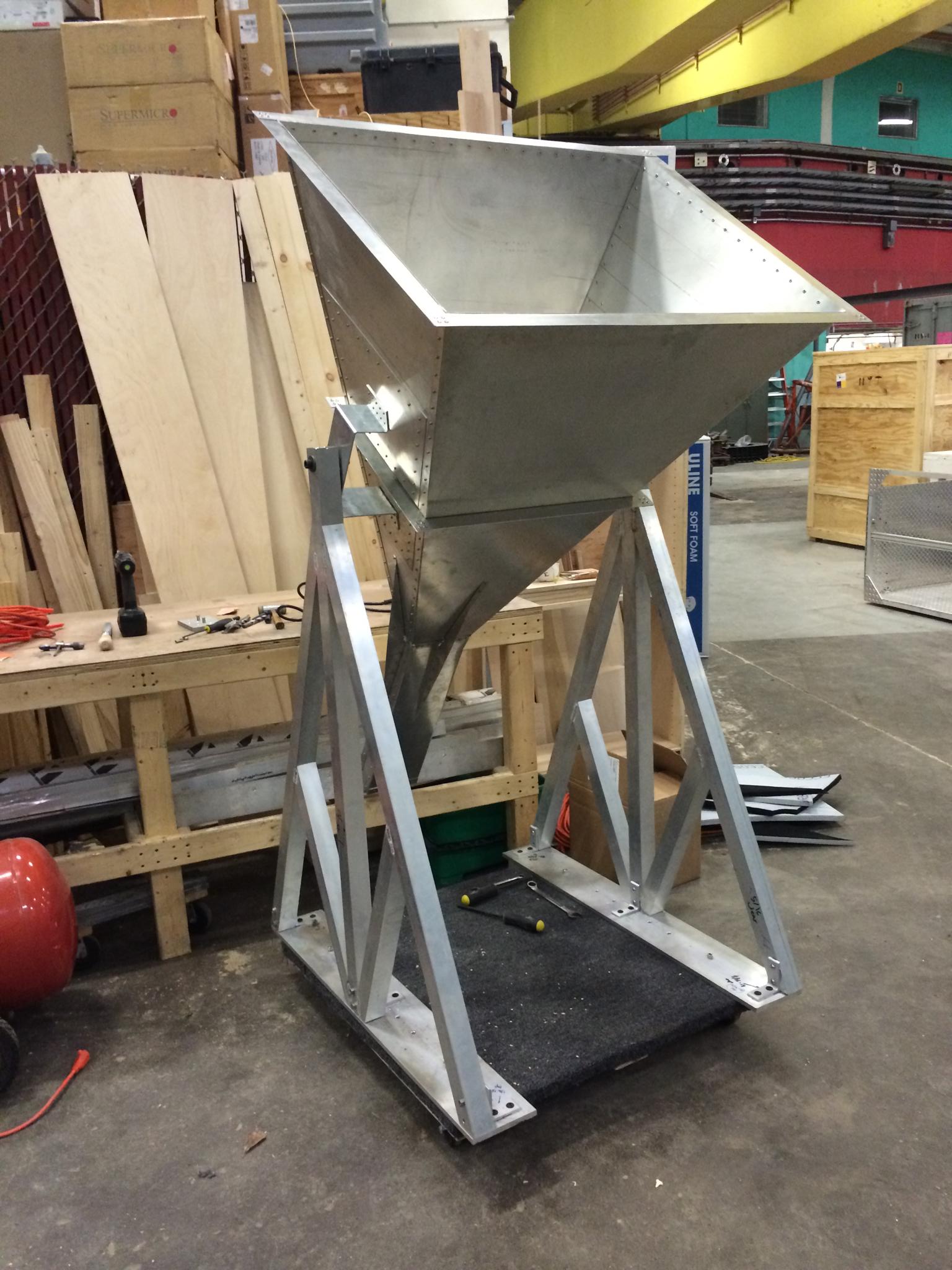
The completed horn antenna and mount. The 20dB horn antenna is the largest 1.42GHz optimal gain horn able to be cut from a 4'x4' sheet of sheet metal.
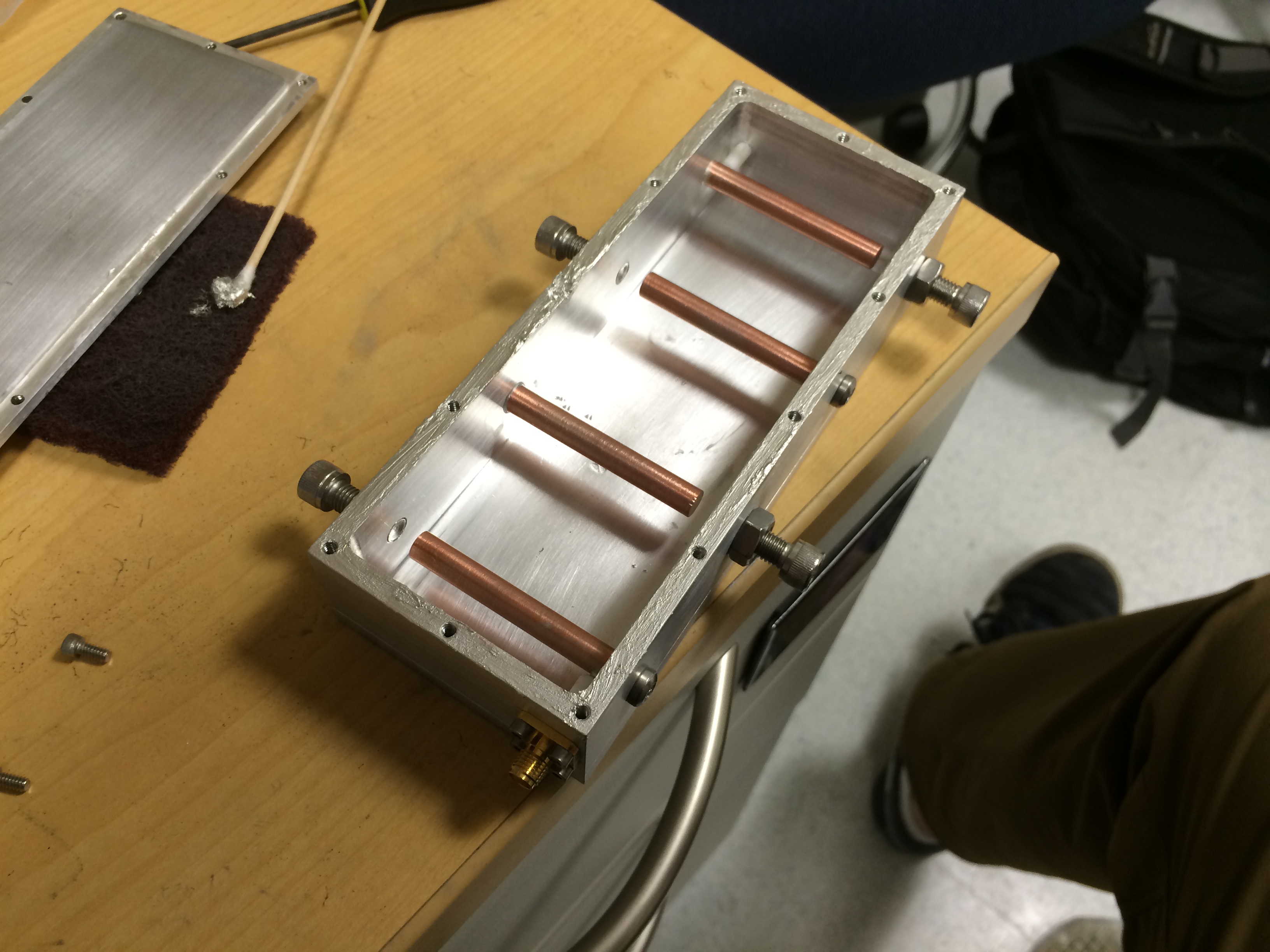
An interdigitated bandpass filter I designed for use with the L-band horn antenna. The filter has a design bandpass of ~12MHz, allowing for both high radial velocity measurements of the 21cm line, whilst rejecting near-in RFI to better than 40dB.
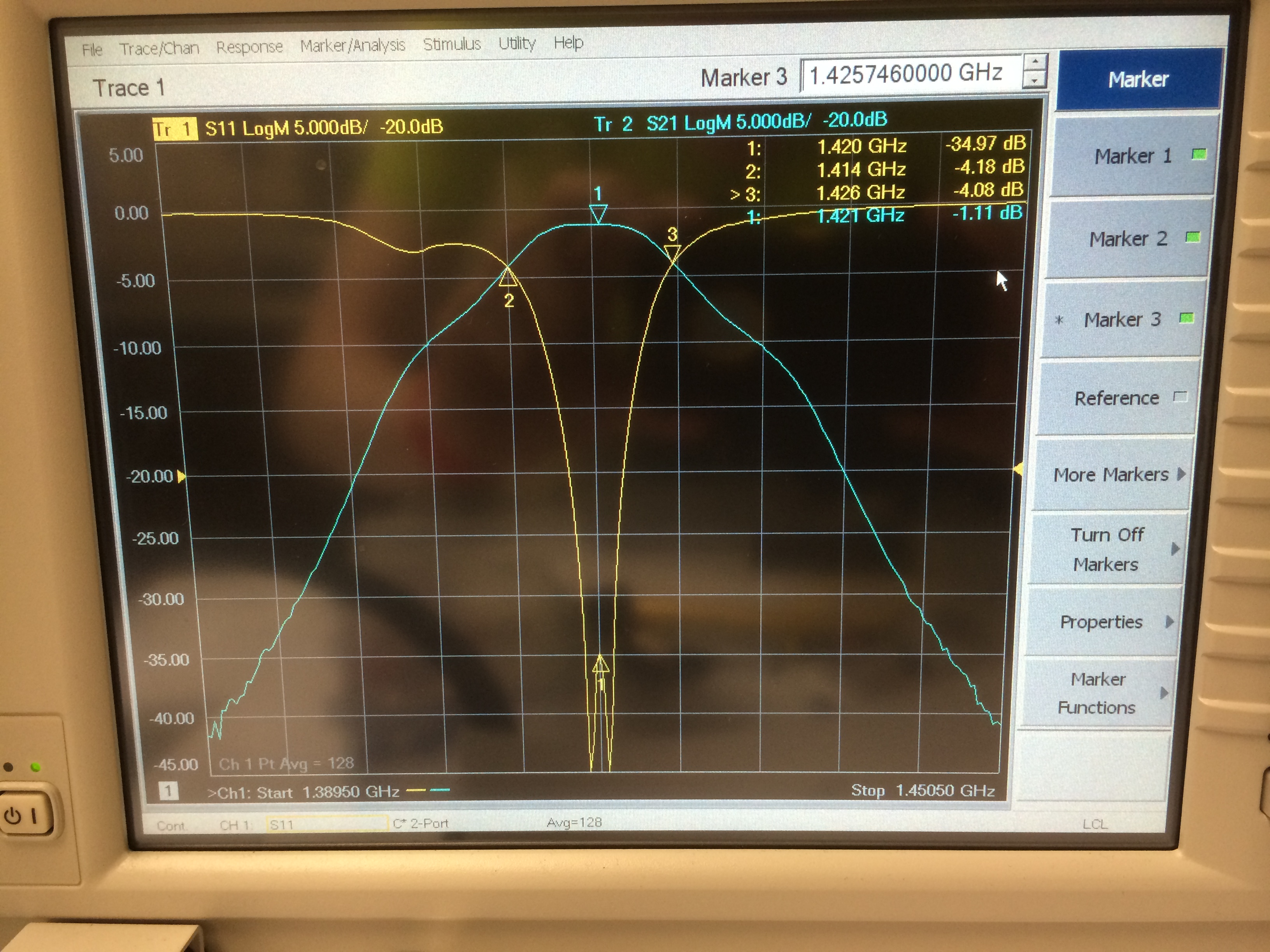
The response of the interdigitated bandpass filter as measured on a VNA.
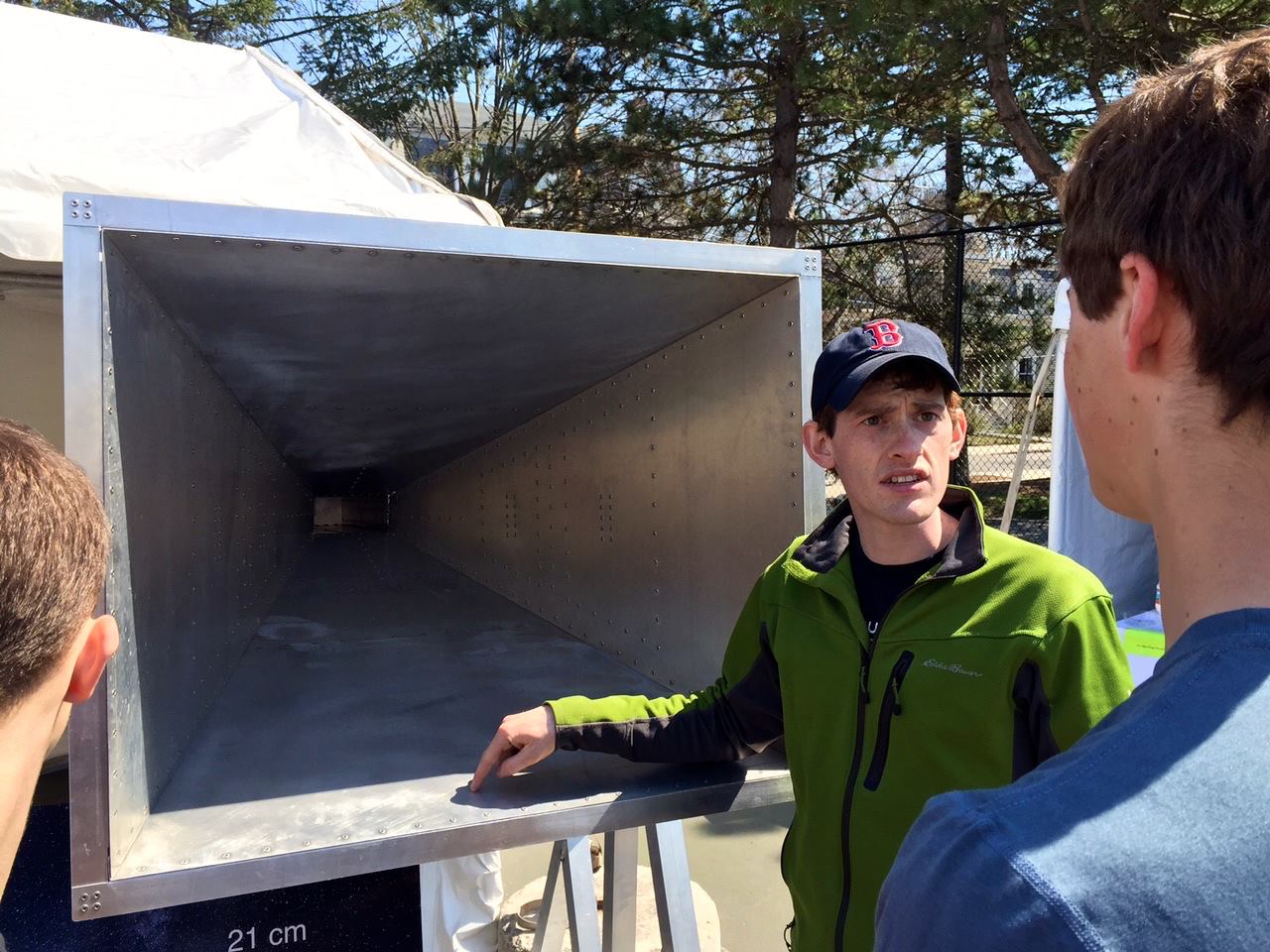
The horn was used as a demonstation at the Cambridge Science Festival. We showed in interested adults and children both H1 spectra whilst pointing into the plane of the Milky Way, and interferometric fringes from the addition of two horn antennas pointed at the Sun.
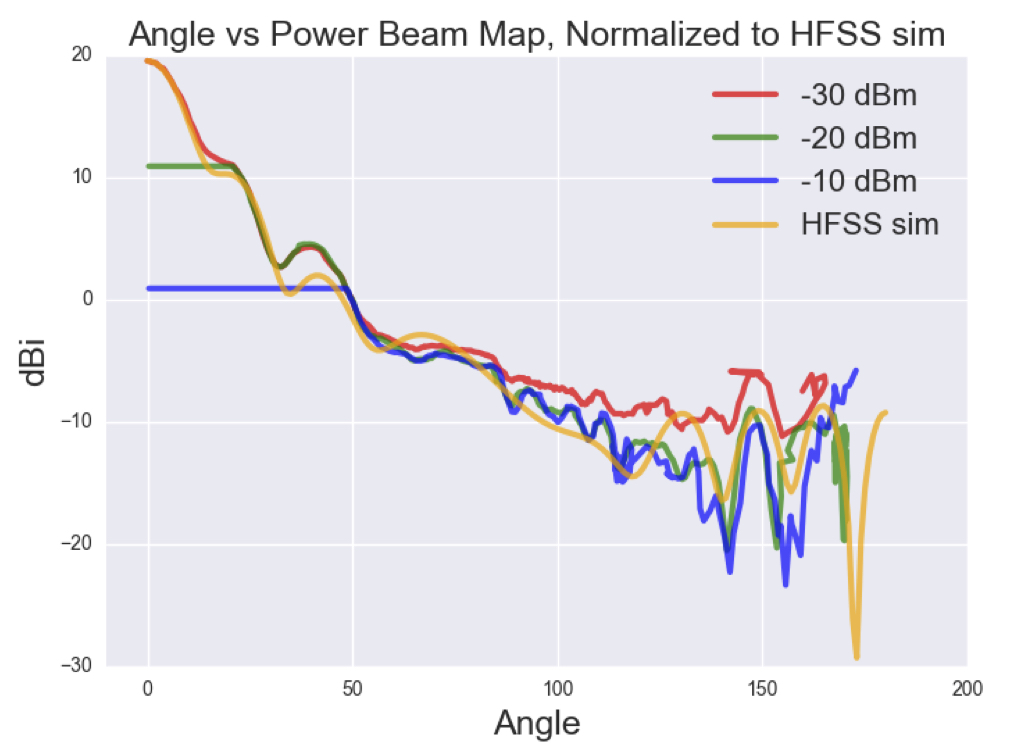
The theoretical beam map (yellow) with experimental results at different powers (red, green, and blue curves).
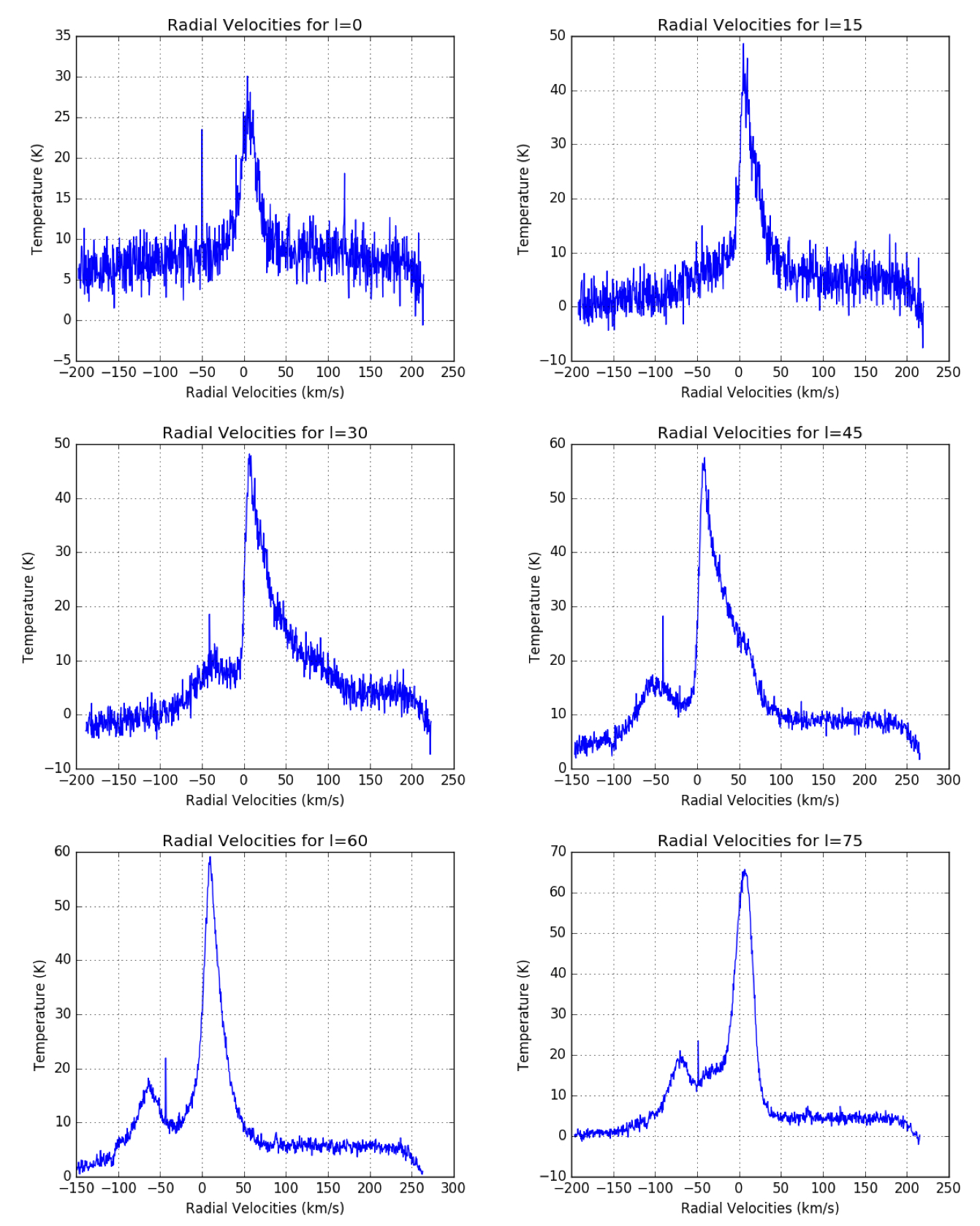
Sample spectra of temperature vs. radial velocity at six different galactic longitudes taken by the students in Astronomy 191.





